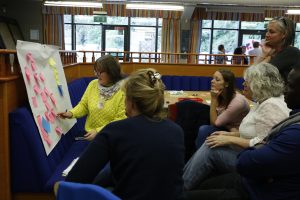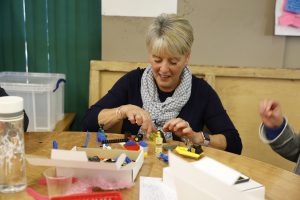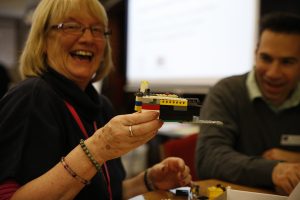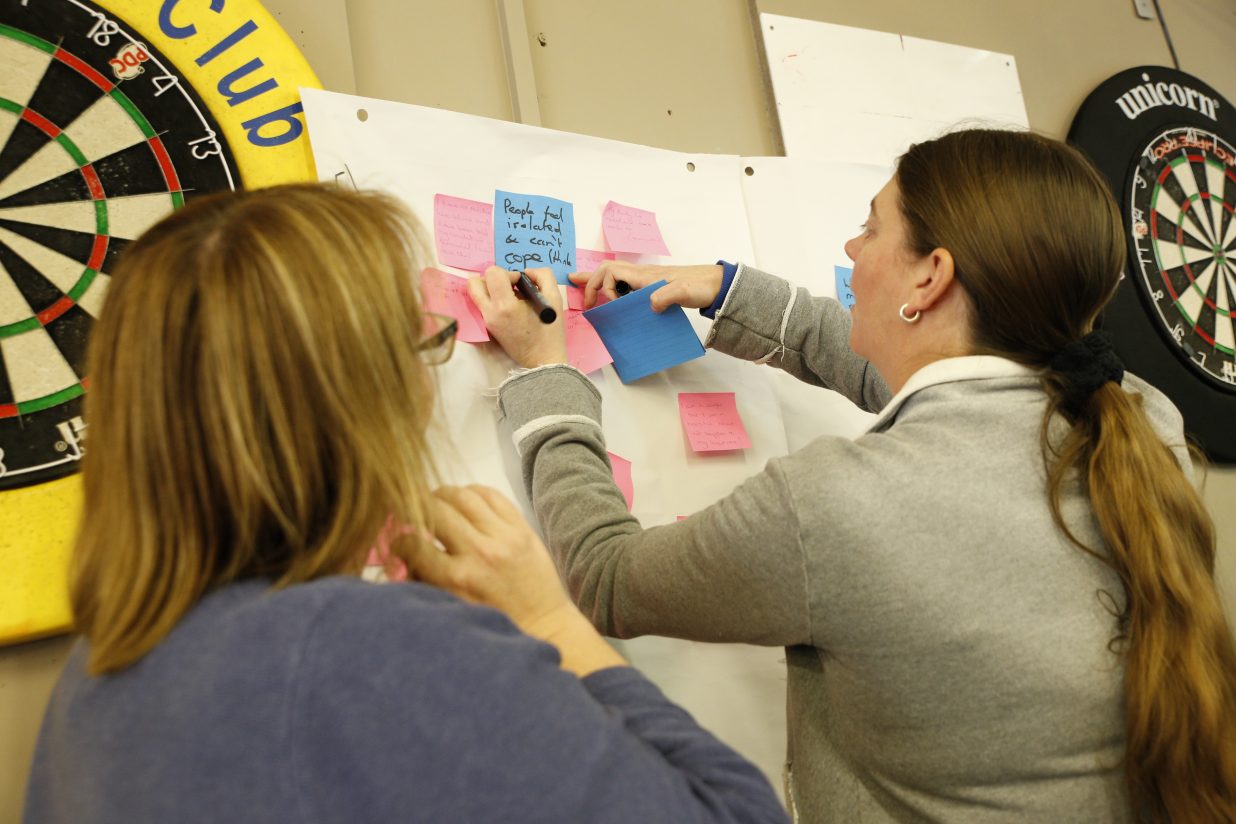Call our 24/7 advice line for health care professionals and families if you need support with symptom management and end of life care - 01284 766133.
Process starts with staff and volunteers
Staff and volunteers were encouraged to think about the Hospice’s services and what our care could look like in the future during special events.
During the two away days which took place in October 2016, some 127 staff and 11 volunteers came together to consider how the organisation could develop in the years to come.
The sessions featured innovative problem solving, the chance to share great ideas and a lot of laughter as everyone worked together to create a vision for the future which will see the Hospice provide the very best care for those in the final chapters of their lives.
Stories shared by staff gave an insight into some of the wonderful work that goes on within our Hospice, as well as the chance to learn more about our different services. Teams shared their own achievements as well as changes that had happened and their outcomes.

Thinking differently was a key theme throughout the away days and it was up to Alex Menhams from the Ideas Centre to get everyone thinking more creatively.
Everyone was encouraged to think about some of the issues those using our services and their families may face and how we could find solutions and suggest new ideas.
The key problem areas groups were given to think about were:
• People and their families as they face death and bereavement
• Those in our community who wish to support us financially and in other ways.
Working in groups each person was asked to come up with five possible problems and after writing them down on post-it notes the group came together to see if the problems fitted into themes.
After considering each of the emerging themes groups decided on the three they would like to take forward to develop and discuss during the afternoon session.
The theme of the afternoon session was turning problems into solutions using Lego.

Everyone was asked not to rush straight to an answer but to carefully consider the problem, firstly by creating a Lego model to illustrate it and then working with a partner to come up with a solution, and changing the model to reflect this.
These models were then discussed by the whole group who decided which problem/solution they wanted to present and reflect on what they have learnt as they listened and discovered.


